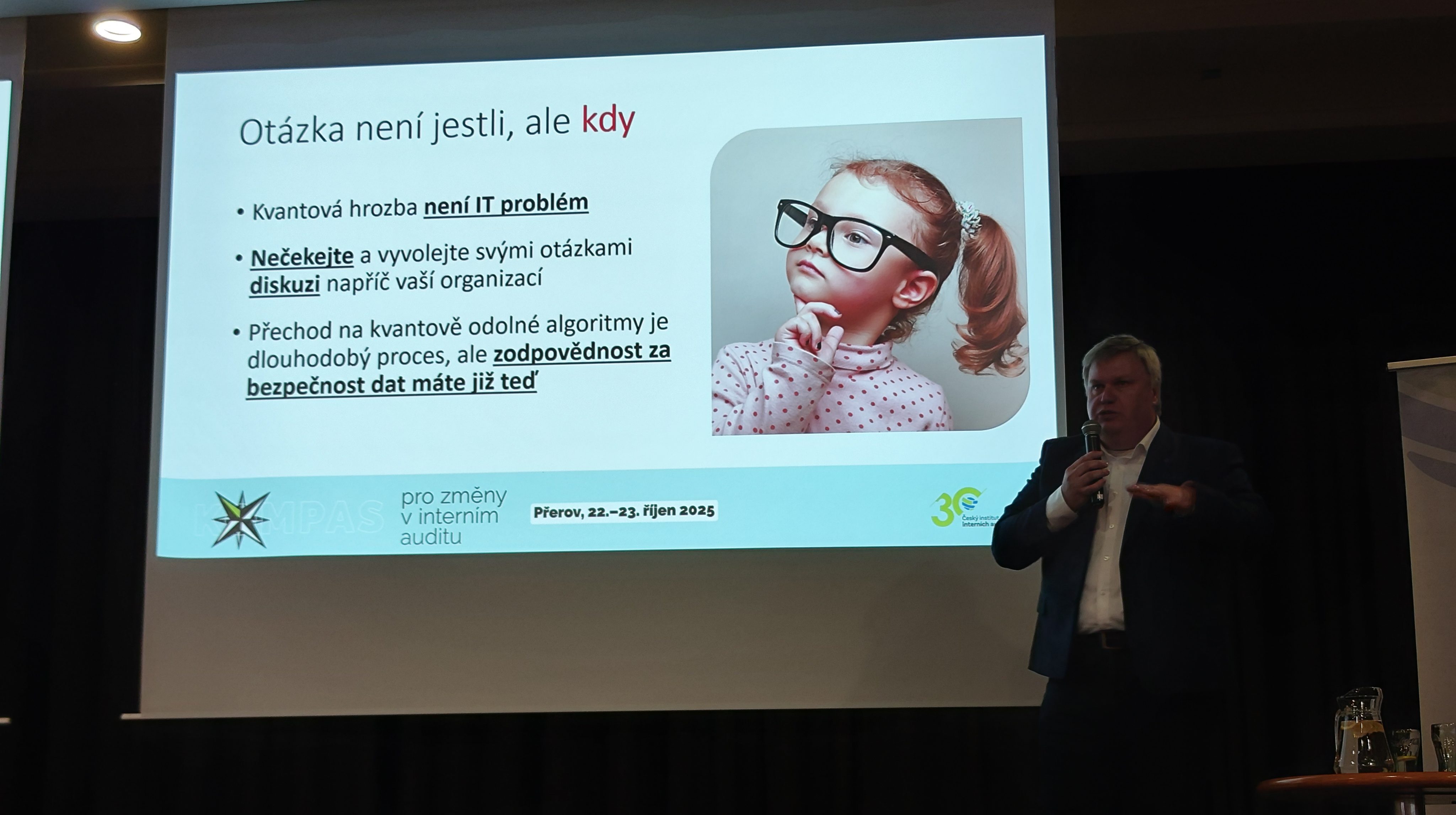
ITS blog: news in post-quantum cryptography - July 2025
2 min

Quantum technologies do not sleep even in summer, so we bring you again a summary of the most interesting things from the past month. And what happened? New regulatory deadlines, the first production tools for PQC in large infrastructures and other hardware news make it clear that the era of quantum-safe is here - andthe time to migrate is now.
Regulation sets the pace
Last month, we mentioned the EU's joint strategy for a coordinated transition to safer PQC technologies. here.
Quantum computing power in practice
Leaving aside security for a moment, it is worth mentioning the possibilities that the computational capabilities of quantum computers already offer today. And which can significantly advance and benefit the entire human population. You're probably guessing that this will involve chemistry or biology.
A major breakthrough has been achieved by successfully solving the most complex biological problem of protein folding to date.
Using the IonQ Forte quantum computer (USA) and an innovative algorithm from Kip Quantum (Germany), we have succeeded in simulating 3D protein folding with up to 12 amino acids. This result represents a major step towards the practical application of quantum technologies in biomedicine, especially in the development of new drugs, and confirms the growing ability of quantum systems to solve real scientific problems.
The Czech Republic is not lagging behind
Within the Czech Republic, another activity under the Quantum Innovation Center Czech project is worth mentioning, which took place at the Czech Academy of Sciences and the Institute of Instrumentation Technology in Brno, where the results of quantum computing, including in the field of materials research and other applications, were presented during the workshop "Quantum Computing in the Academy of Sciences 2025".
First major vendor with integrated PQC
On June 26, F5 released the Post-Quantum Cryptography Readiness Solutions package for BIG-IP Next, NGINX App Protect and Distributed Cloud. Key feature: hybrid handshake (Cyber/Dilithium + ECDHE) with no measurable loss of throughput at the L7 layer. What does this mean? Enterprises will be able to deploy "quantum-safe" on edge proxies without touching backends - ideal for phased key rotation.
Something extra for crypt fans
Quantum-native blockchain? Yes. BTQ Technologies launched a public Quantum Proof-of-Work (QPoW) Simulator based on boson sampling on July 8, 2025. It promises up to 30× lower energy footprint compared to SHA-256 PoW and is already heading to the QuINSA standards group.
Recommendations
What should your action plan look like for the next quarter? Here are some concrete steps:
- Inventory all public keys and TLS end-points.
- Pilot a hybrid Cyber/TLS on a reverse proxy (F5, OpenSSL 3.3-dev).
- Reserve runtime on PIAST-Q/ALTAIR or Odra 5 for internal red-teaming.
- Consider HW entropy (QRNG) for HSMs with long lifetime certificates.
- Follow the standards - QuINSA for QPoW and ENISA guidance on the EU Roadmap.
Conclusion
The last 30 days have brought a clear message: post-quantum cryptography is no longer a research buzzword, but a hard roadmap with terms, tools and real machines. Security teams that start this year will have a competitive advantage - and avoid panic when the regulatory whip really swings in 2026.
What else to read
See more news from the world of IT and ITS




